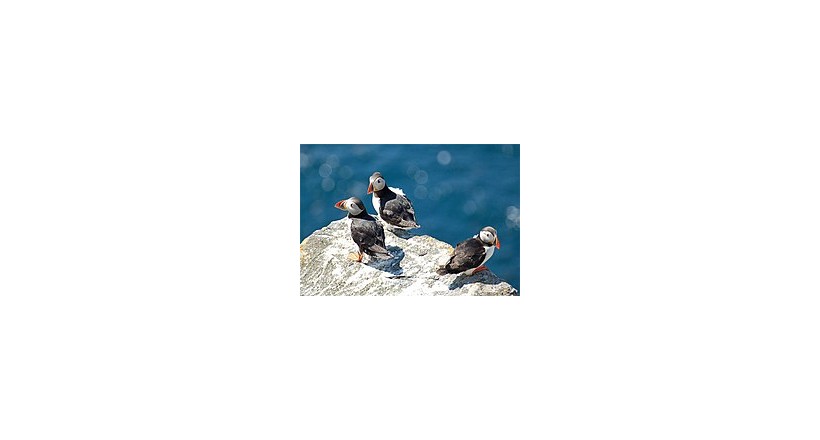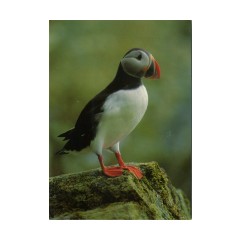Puffins are any of three small species of alcids (auks) in the bird genus Fratercula with a brightly coloured beak during the breeding season. These are pelagic seabirds that feed primarily by diving in the water. They breed in large colonies on coastal cliffs or offshore islands, nesting in crevices among rocks or in burrows in the soil. Two species, the tufted puffin and horned puffin, are found in the North Pacific Ocean, while the Atlantic puffin is found in the North Atlantic Ocean.
All puffin species have predominantly black or black and white plumage, a stocky build, and large beaks. They shed the colourful outer parts of their bills after the breeding season, leaving a smaller and duller beak. Their short wings are adapted for swimming with a flying technique under water. In the air, they beat their wings rapidly (up to 400 times per minute) in swift flight, often flying low over the ocean's surface.
A significant decline in numbers of puffins on Shetland is worrying scientists
The puffins are stocky, short-winged and short-tailed birds, with black upper parts and white or brownish-grey underparts. The head has a black cap, the face is mainly white, and the feet are orange-red. The bill appears large and colourful during the breeding season. The colourful outer part of the bill is shed after the breeding season, revealing a smaller and duller true bill beneath.
Although the puffins are vocal at their breeding colonies, they are silent at sea. They fly relatively high above the water, typically 10 m (33 ft) as compared with the 1.6 m (5.2 ft) of other auks





